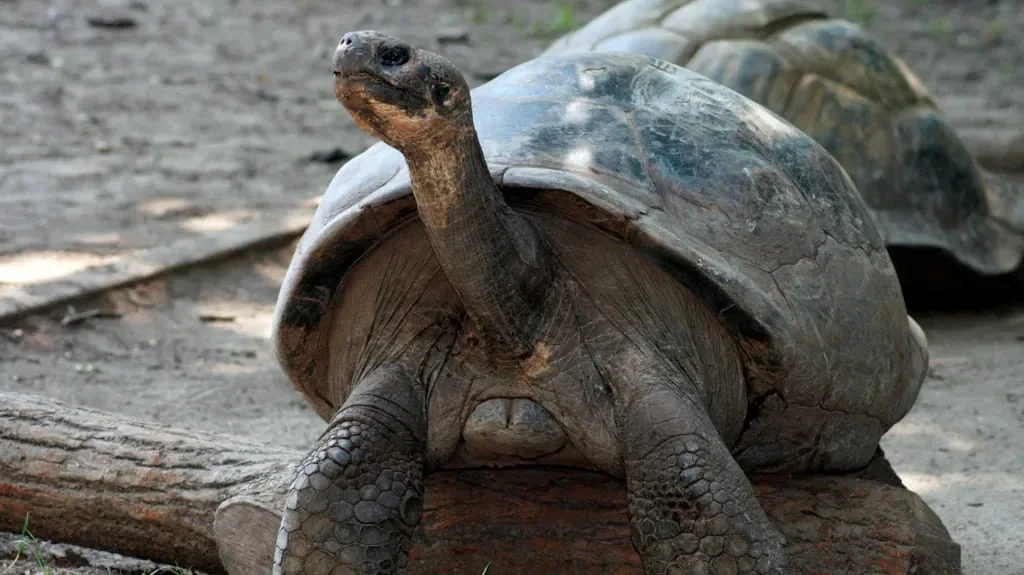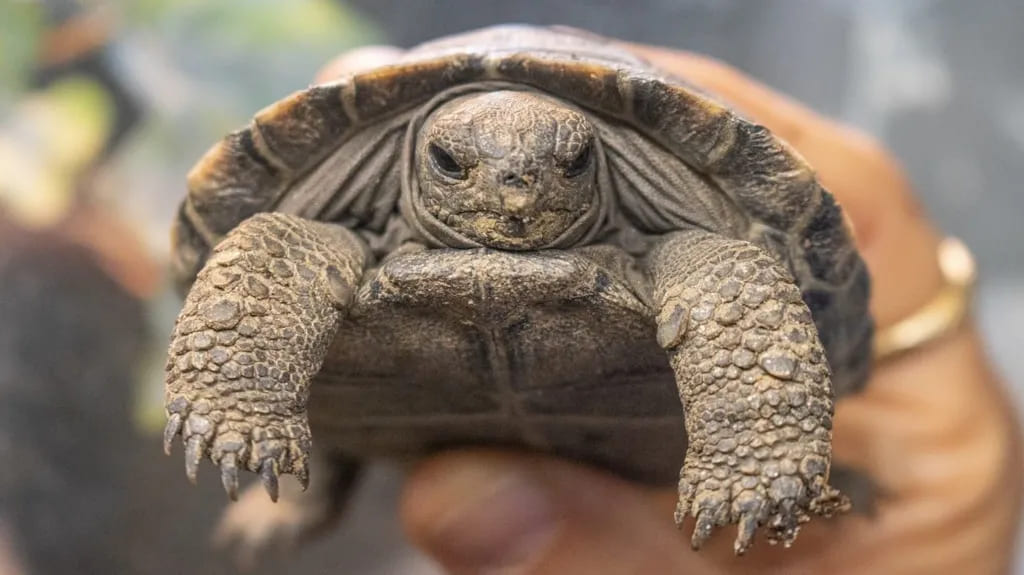
An Endangered Galápagos Tortoise Is a First-Time Mother at 100 | Travel News
Big congratulations are in order for Mommy, a Galápagos tortoise who’s been a beloved resident of the Philadelphia Zoo since 1932, and has just become a first-time mom — at an estimated 100 years old.
Back in November, Mommy laid 16 eggs, and now four of them have hatched, marking the first successful hatching of her species in the zoo’s long history, dating all the way back to 1874.
She wasn’t alone in this milestone. She had help from Abrazzo, a male Galápagos tortoise also believed to be around 100 years old.
Both Mommy and Abrazzo belong to the Western Santa Cruz subspecies, and are currently the oldest animals at the Philadelphia Zoo. But since Galápagos tortoises can live up to 200 years, zoo officials say they’re still in their "middle age."
The zoo announced that the first baby tortoise hatched on February 27, with the remaining three following in the next few days. The last one arrived on March 6.
While the hatchlings haven't been named yet, the zoo shared that they’ll be on public display starting April 23. So far, they’re doing “fantastic,” according to Lauren Augustine, the zoo’s director of herpetology. (Herpetology is the study of reptiles and amphibians.)
“They are about the size of a tennis ball and they are pretty feisty, actually,” said Ms. Augustine.
This hatching is a major win, as Western Santa Cruz Galápagos tortoises are listed as critically endangered by the International Union for Conservation of Nature. Before these hatchlings, there were only 44 Western Santa Cruz Giant tortoises in U.S. zoos, according to the Philadelphia Zoo.

Due to the massive size of the parents—Abrazzo weighs in at 410 pounds, and Mommy at around 280—the hatchlings won’t be kept in the same space to avoid any risk of injury.
Unlike Mommy, this wasn’t Abrazzo’s first time as a dad. Back in 2011, he helped father five hatchlings at his former home, the Riverbanks Zoo and Garden in South Carolina.
He was moved to the Philadelphia Zoo based on recommendations from the Association of Zoos and Aquariums, which identified him as a great genetic match for Mommy. The pair were introduced in 2022, and Mommy began laying eggs the following year. Her first three clutches were nonviable, but the fourth time was a charm.
After laying the eggs, the zoo’s team weighed and measured them, then placed them in artificial incubators set at two different temperatures—one to encourage female development and a lower one to produce males. All four hatchlings so far are female, though three more eggs are still being incubated.
“It’s sort of a testimony through the excellent care that she must be receiving at that institution,” said Stephen Divers, a professor of zoological medicine at the University of Georgia. “It’s not easy keeping a giant tropical tortoise appropriately in the northern hemisphere.”
The baby tortoises will remain in captivity for at least five years. After that, the zoo—working closely with the Association of Zoos and Aquariums—will decide on their next steps. They may be moved to other zoos as part of conservation programs, or potentially even reintroduced to the Galápagos Islands. But according to Rachel Metz, the zoo’s vice president of animal well-being, that comes with risks:
“They’re at extreme risk from natural disasters, disease potentially, climate change and invasive species,” she said.
Once numbering in the hundreds of thousands, Galápagos tortoise populations plummeted due to overhunting. Thanks to decades of conservation and breeding efforts, their numbers have now rebounded to around 17,000.
While population estimates for the Western Santa Cruz subspecies vary, Stephen Blake, a biology professor at St. Louis University, believes the population is in the thousands and appears to be stable and growing.
Since captive breeding is rare for this species, these hatchlings offer scientists a valuable opportunity to study Galápagos tortoises from birth, says Juan Manuel Vazquez, a biologist who researches aging in long-lived species.
“Every additional tortoise counts,” he said.
Blake added that while tortoises breeding at 100 is not unusual in the wild, these babies are still meaningful—especially in raising public awareness:
“This one reproducing tortoise, in my opinion, isn’t going to do much for what’s going on in the wild in direct terms,” he said. “But in indirect terms, if the zoo can promote the wonder of a 100-year-old reptile producing babies for the first time and use that as a vehicle to promote wonder among people and a conservation ethic, then so much the better.”
Check Our Suggested Tours:
- Eastern Galapagos Explorer 8-Day Cruise from San Cristóbal
- Enchanted Central Islands Luxury Exploration
- 8 Days Western and Northern Galapagos Islands catamaran cruise
- Galapagos Luxury Cruise: Unforgettable Adventures in Ultimate Comfort
- Galápagos by Catamaran: An Intimate Voyage
- Galapagos Central and North Islands cruising vacation

